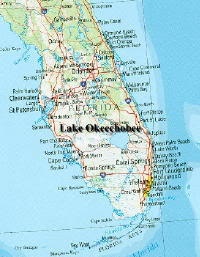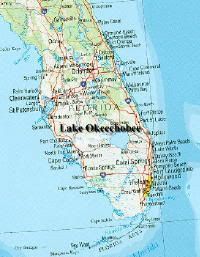Coal plant rejected, Fla. utility turns to risky nukes

 As my fellow Facing South blogger Randy Neal reports today, the Florida Public Service Commission this week unanimously nixed Florida Power & Light's proposal to build a $5.7 billion coal-fired power plant on the western edge of Lake Okeechobee.
As my fellow Facing South blogger Randy Neal reports today, the Florida Public Service Commission this week unanimously nixed Florida Power & Light's proposal to build a $5.7 billion coal-fired power plant on the western edge of Lake Okeechobee.
Environmental advocates had warned that the plan to build two 980-megawatt generating units near Moore Haven, Fla. would have emitted an unacceptable amount of greenhouse gases, polluted the Everglades with mercury and depleted already-imperiled local water supplies.
Randy noted that Southern Alliance for Clean Energy Director Stephen Smith said:
"It is time that FPL get serious about investing in energy efficiency and clean energy which will not threaten the future health and safety of their customers."
But rather than do that, FP&L rushed to replace the vanquished coal plant with another unsafe, polluting and costly alternative: nuclear power.
One day after its coal-plant plans were dashed, FP&L asked Miami-Dade County for zoning permission to add up to two additional reactors at its Turkey Point nuclear plant, which would bring the state's total number of nukes up to six.
Indeed, building more nukes could be the energy wave of the future -- especially in the South.
That was the message delivered yesterday by the Nuclear Regulatory Commission chief at a conference in Orlando. Dr. Dale Klein said his agency anticipates a surge of license applications this year and next -- and he predicted that Florida, Virginia and South Carolina would be at the forefront of the atomic renaissance.
The NRC and other pro-nuclear advocates like to point out that nuclear power plants discharge virtually no carbon dioxide compared to plants that burn fossil fuels. However, this argument neglects the fact that nuclear plants emit to the environment other dangerous pollution in the form of cancer-causing radionuclides such as cesium-137, iodine-131 and strontium-90.
Indeed, Joseph Mangano, an epidemiologist with the nonprofit Radiation and Public Health Project, recently examined cancer rates in the area around Progress Energy's Crystal River nuclear plant in Levy County, Fla. He found that before Crystal River opened in 1977, the county's cancer death rate was 18 percent below the U.S. average. But since then, the county's rate has climbed to 1 percent above the national average, with particularly large increases in radiation-sensitive cancers including leukemia, lymphoma and breast cancer. Though it's impossible to say that the increase in cancer is directly tied to the plant, the findings certainly raise serious questions that demand further research as well as regulatory caution.
There are also big problems with the nuclear industry's claims that reactors are a solution to global warming. First of all, studies have noted that at least 1,500 reactors would have to be constructed to make any significant dent in greenhouse gas emissions. That in turn would lead to the depletion of known uranium reserves and necessitate mining of lower-grade uranium -- which would increase greenhouse gas emissions.
Greenhouse gases are also produced during uranium milling, processing, enrichment, fuel fabrication and long-term waste storage, which remains a thorny technical and political problem. Furthermore, building so many nukes would be enormously expensive, with U.S. reactors in recent decades costing an average of about $4 billion each -- money that couldn't be invested in energy efficiency and safer technologies.
As the watchdog Nuclear Information and Resource Service concludes in its fact sheet (PDF) on nukes and global warming:
Our choice is stark: we can choose nuclear power, or we can address global warming. We can't do both.
Tags
Sue Sturgis
Sue is the former editorial director of Facing South and the Institute for Southern Studies.
